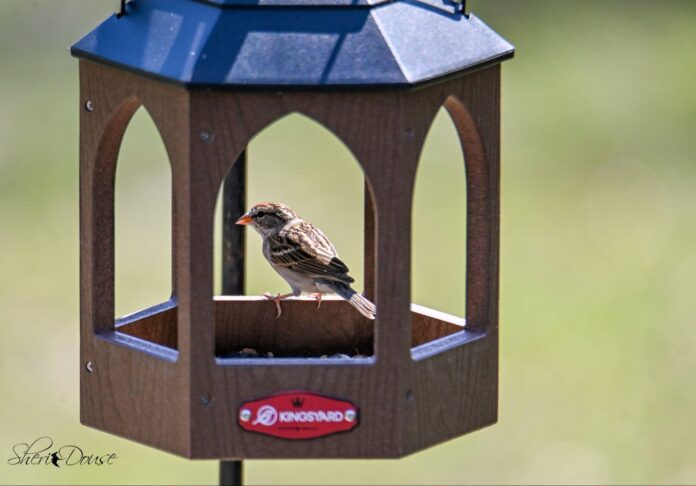Like all creatures, birds rely on three basic elements to survive: food, water, and shelter. The good news? Whether you live in a suburban neighborhood with a full lawn or a compact urban lot, you can create a bird-friendly habitat right in your backyard. And one of the simplest ways to start is by introducing the right bird feeder.
In my years designing outdoor spaces for homeowners, I’ve seen firsthand how adding just a few bird-friendly features can transform a quiet yard into a vibrant, living landscape. Here’s how you can do the same—without breaking the bank.
Step 1: Start with the Basics—Food
A feeder filled with nutrient-rich seeds is the most straightforward way to attract birds. Species like cardinals, chickadees, and goldfinches are drawn to black-oil sunflower seeds and nyjer. But here’s the catch: so are squirrels.
That’s why I recommend investing in a squirrel proof feeder. Trust me, I’ve seen too many clients frustrated by spilled seeds and empty feeders thanks to clever squirrels. Brands like Kingsyard offer squirrel-resistant designs with weight-sensitive perches and built-in baffles to keep your food secure—and your feathered visitors happy.
Pro tip: Place feeders at least 8–10 feet from jump-off points like fences or trees. Pair your feeder with native plants to provide birds with both natural and supplemental food sources.

Step 2: Think Beyond the Feeder—Add Water
A bird feeder might attract attention, but a clean water source encourages birds to stay. Even a shallow dish or pedestal birdbath can serve this purpose, especially if you keep the water fresh and unfrozen in winter months.

Add some stones or shallow edges so smaller birds can perch safely. Position your water feature near your feeding area for convenience, but far enough to prevent seed contamination.
Step 3: Create Shelter and Structure
Birds need safe places to rest, hide, and nest. A combination of trees, shrubs, vines, and ground cover provides essential layers of cover. Even if your yard is limited in size, you can mimic this structure with vertical plantings or container arrangements.
Want to go a step further? Leave a brush pile in a quiet corner of the yard or install a nesting box. Kingsyard also carries accessories like birdhouses and mounts that integrate well with existing feeder setups.
And remember—dead wood isn’t always bad. Leaving a snag (a dead tree trunk or branch) provides food and shelter for woodpeckers, wrens, and nuthatches.
Maintenance Matters: Keep It Clean
Even the best Kingsyard bird feeder won’t do much good if it’s covered in moldy seed. Make a habit of cleaning your feeder every 1–2 weeks with mild soap and hot water, especially in summer months when bacteria can spread quickly.
This not only helps protect the birds—it ensures your backyard remains a healthy, active environment all year long.
Final Thoughts: Small Changes, Big Impact
Your backyard doesn’t need to be a nature preserve to make a difference. Start with one feeder. Observe which birds visit. Try a second feeder or a different seed blend. Add a plant or two that blooms in late summer.
What you’ll notice—within days, usually—is that the birds keep coming back. And with each visit, your outdoor space becomes a little more alive.
So whether you’re sipping coffee on your porch or watching from the kitchen window, take a moment to enjoy what you’ve built: a backyard that welcomes nature in, one bird feeder at a time.

